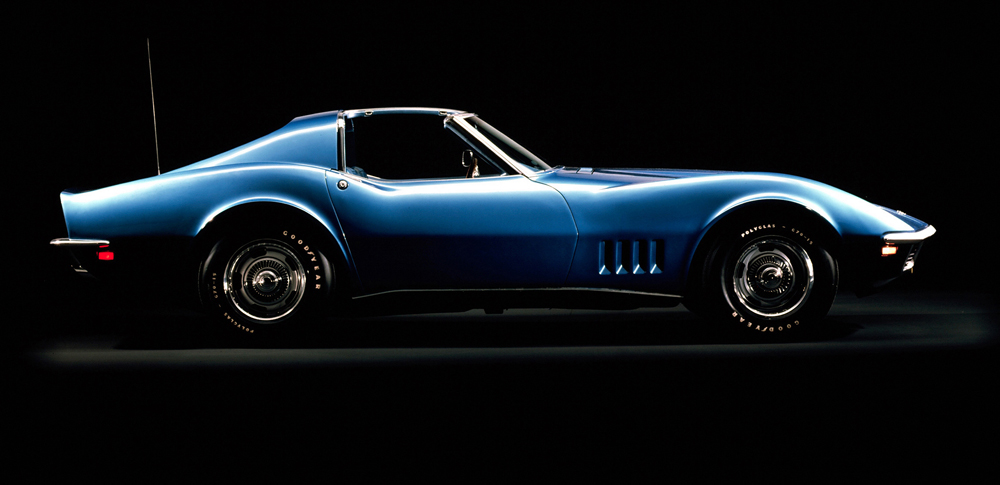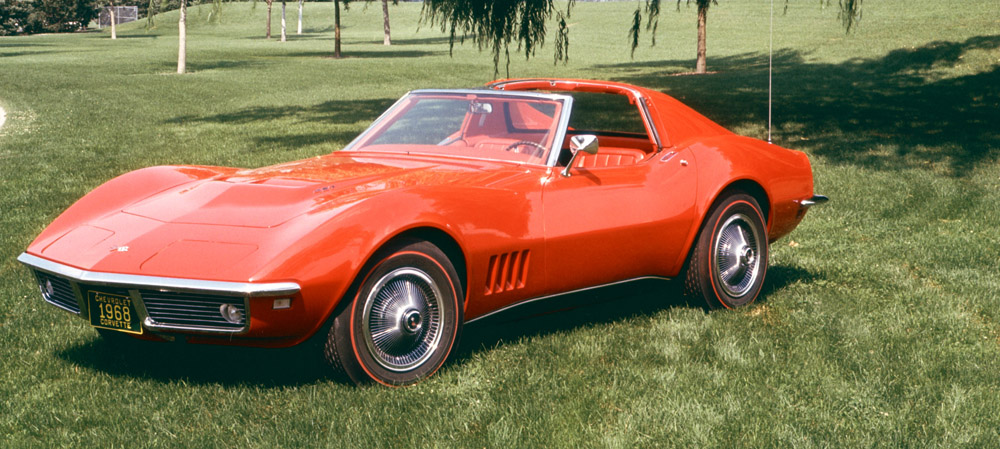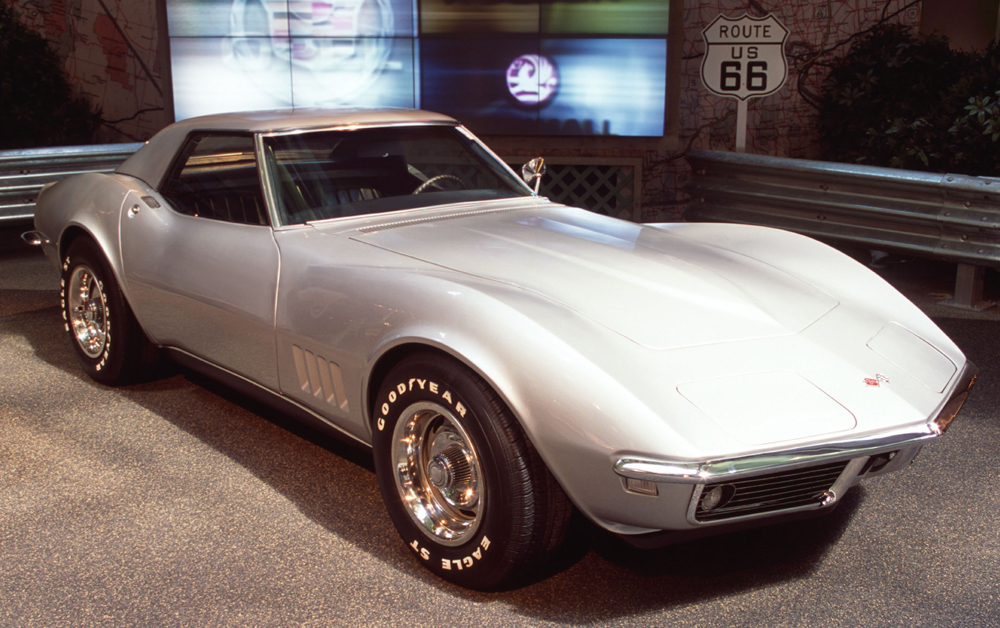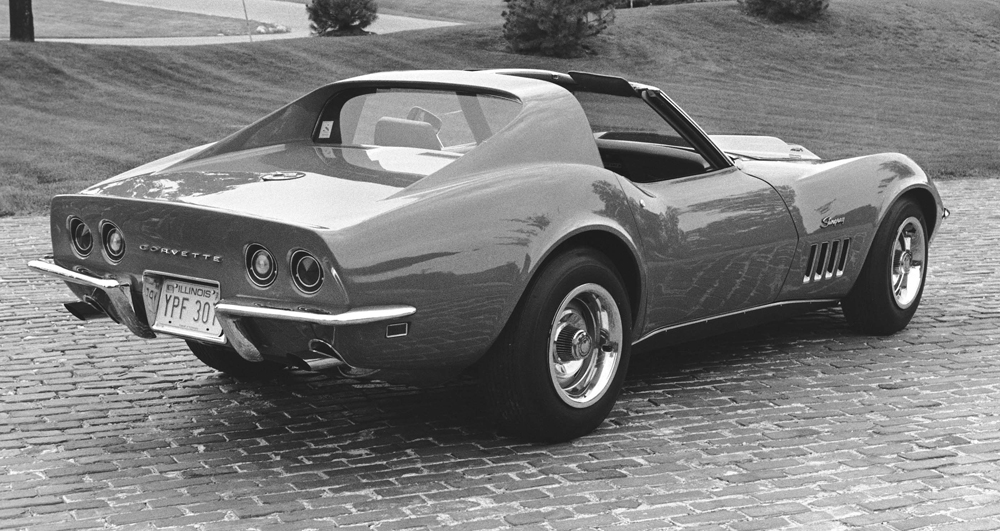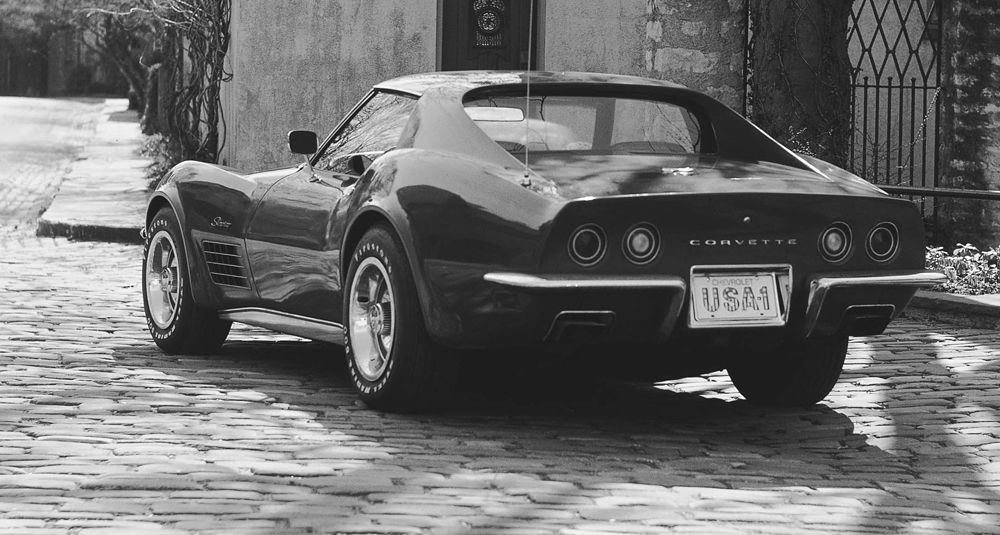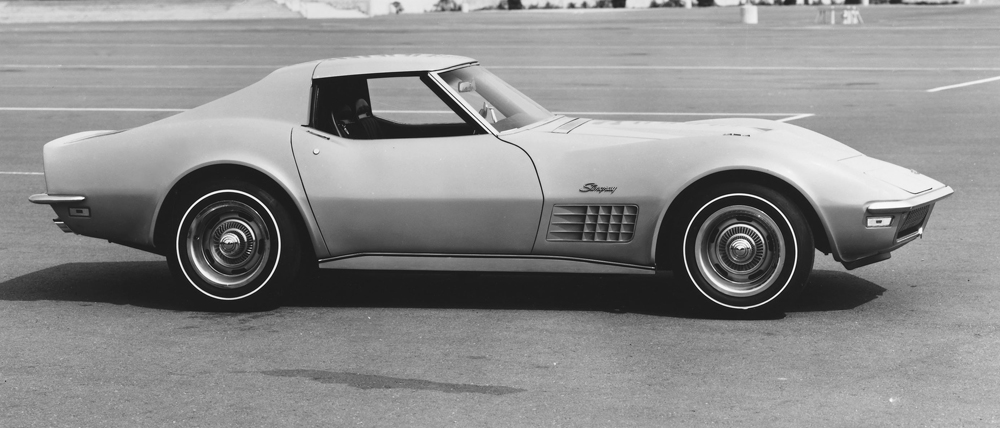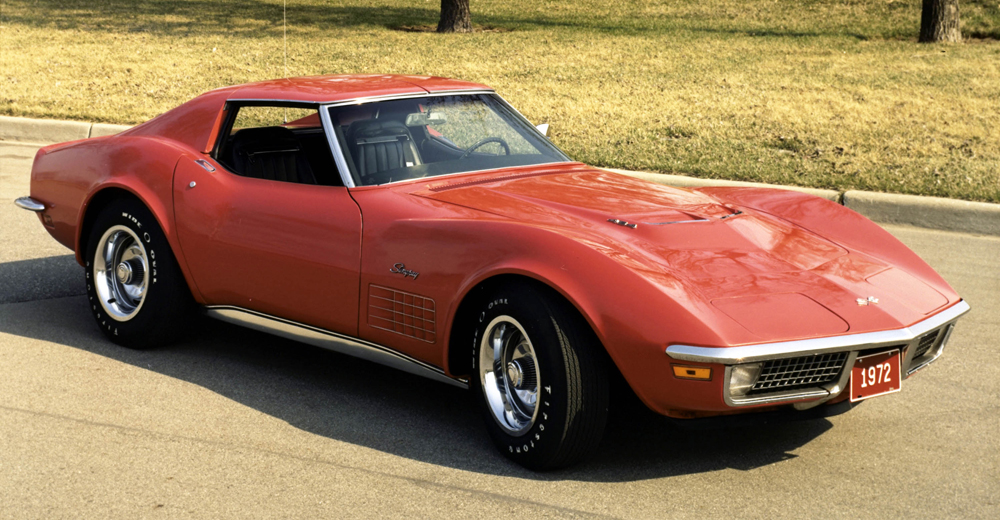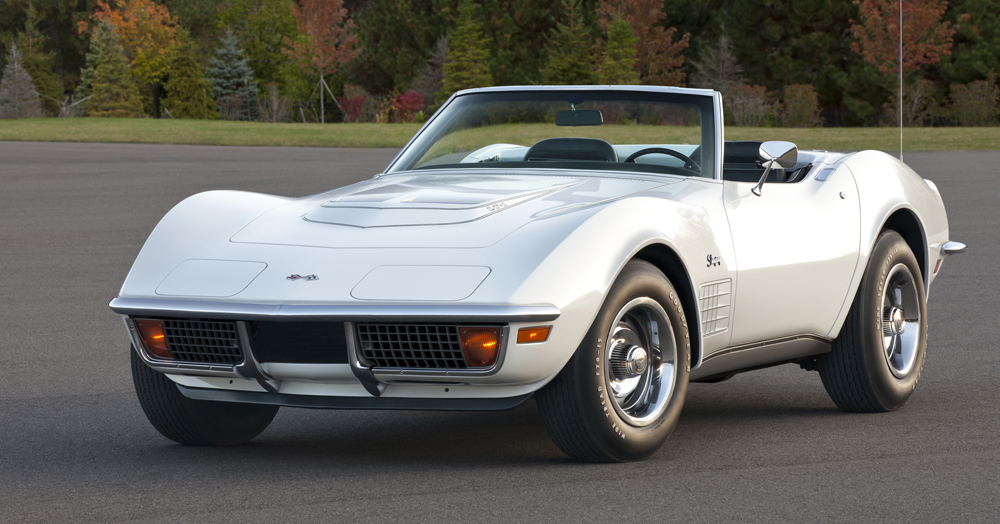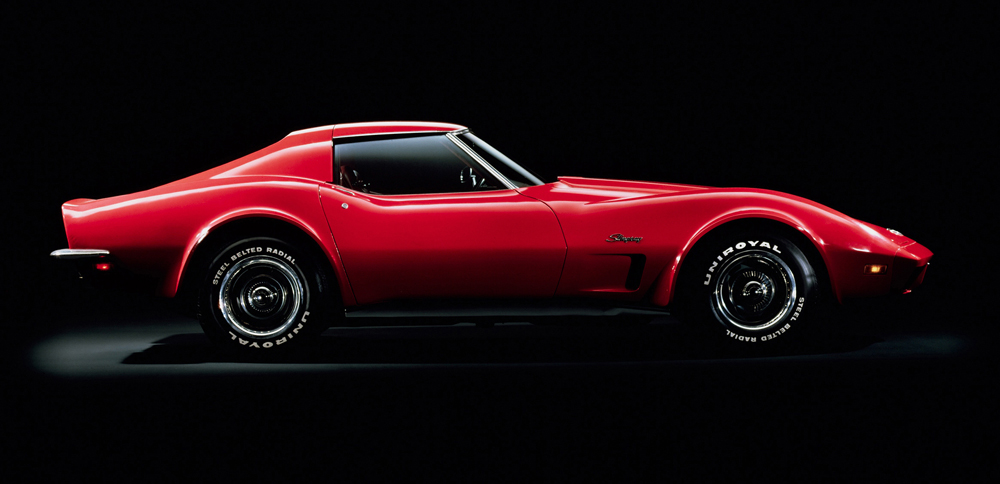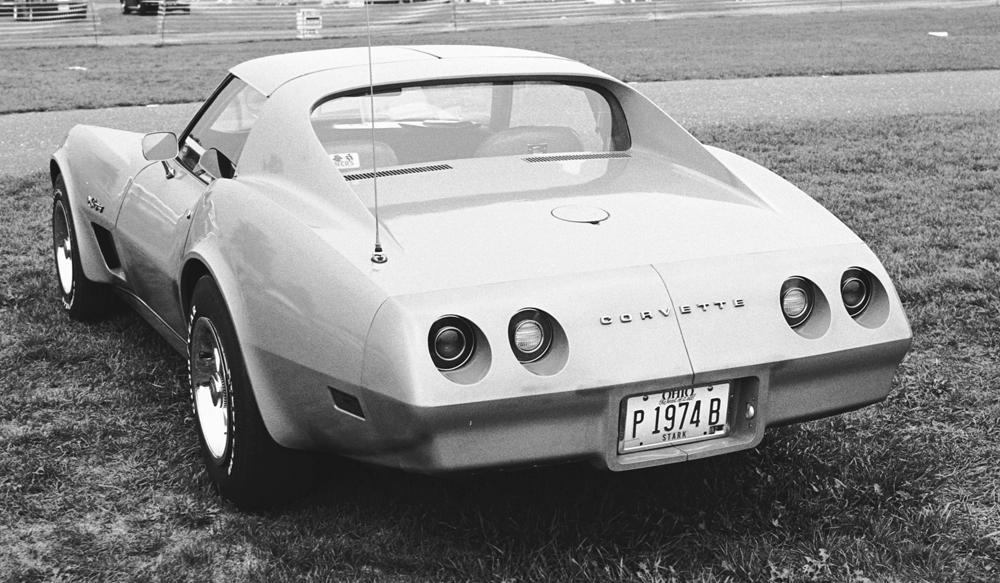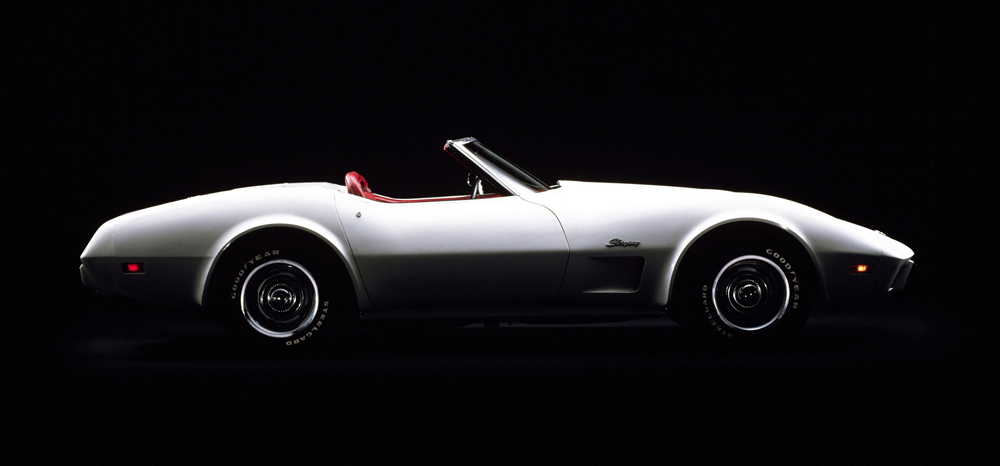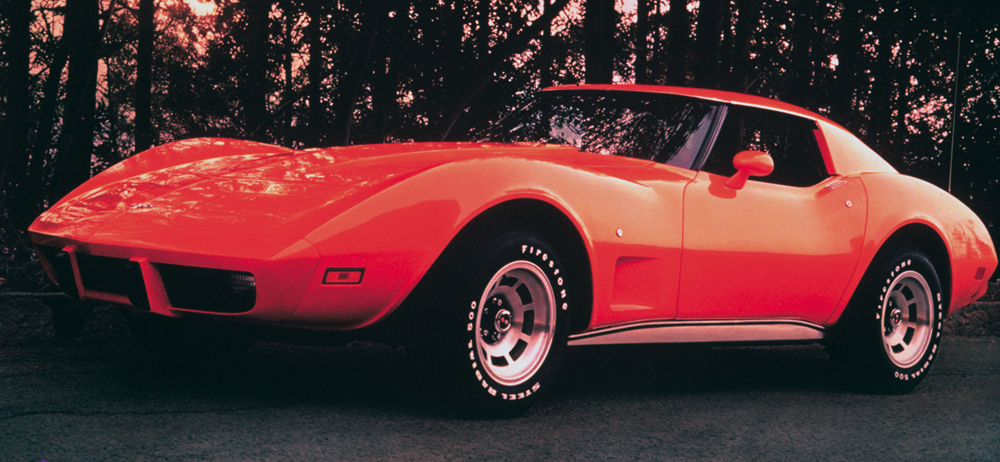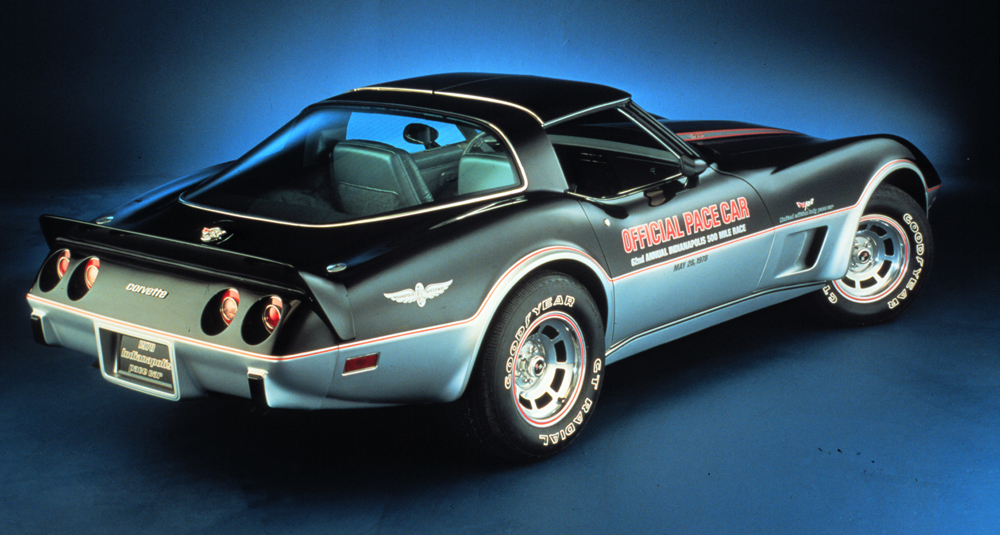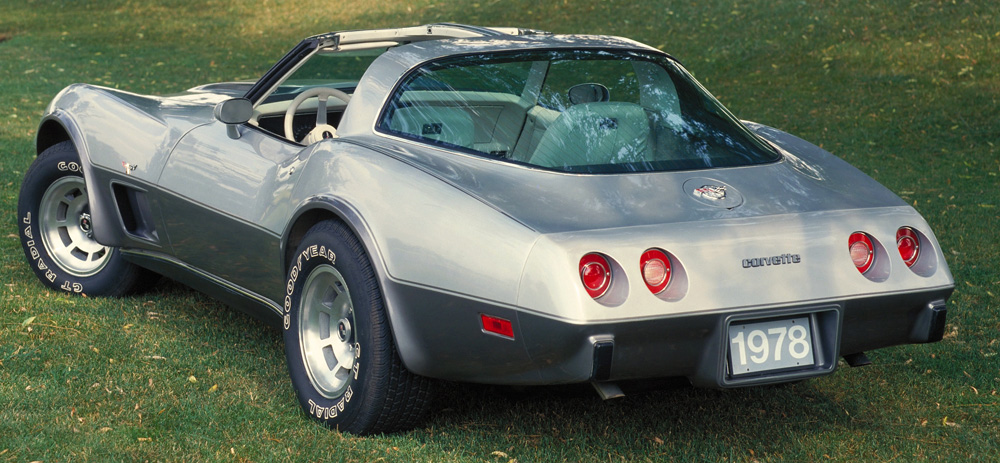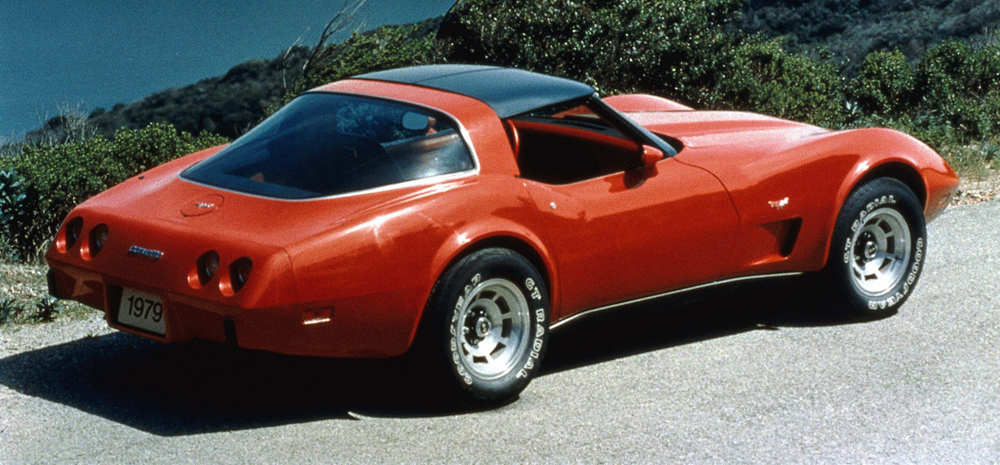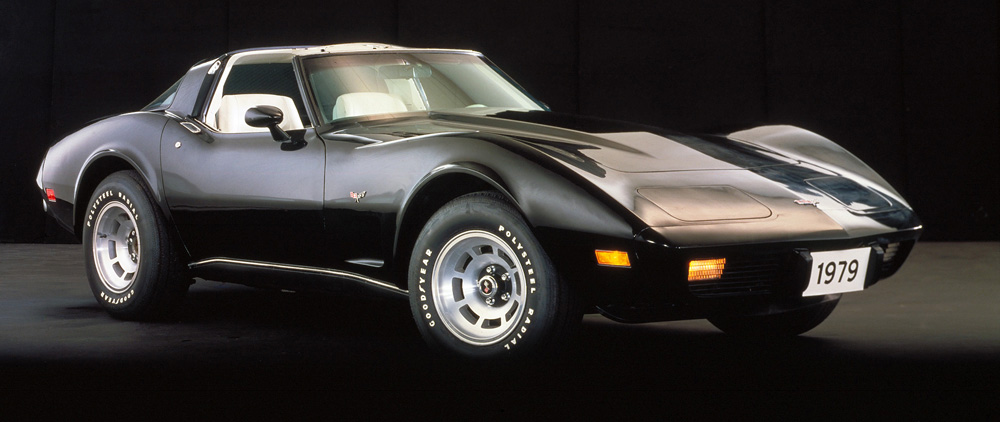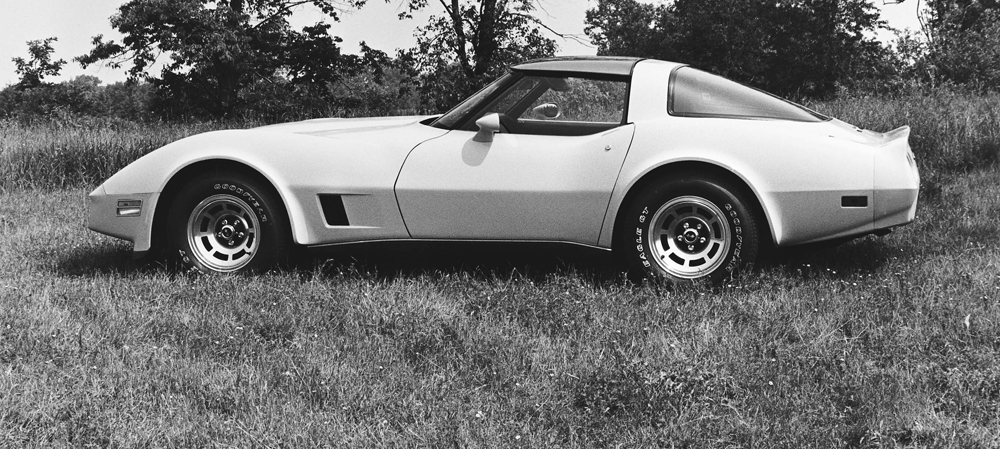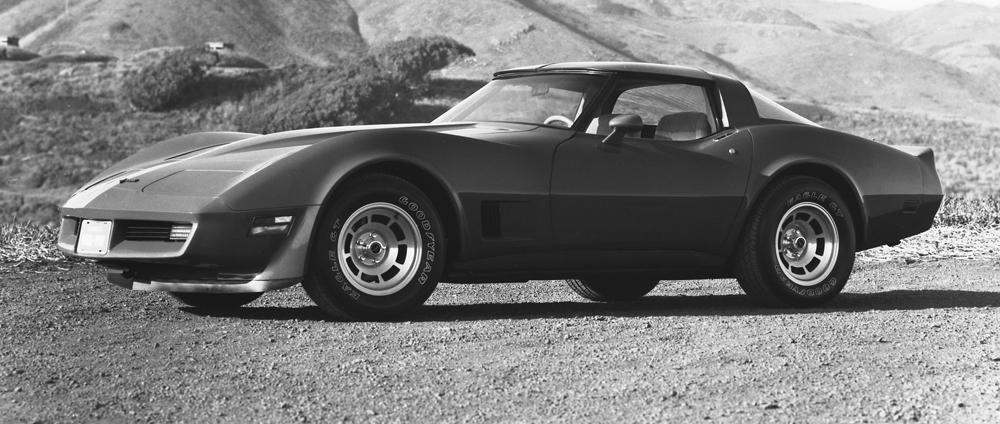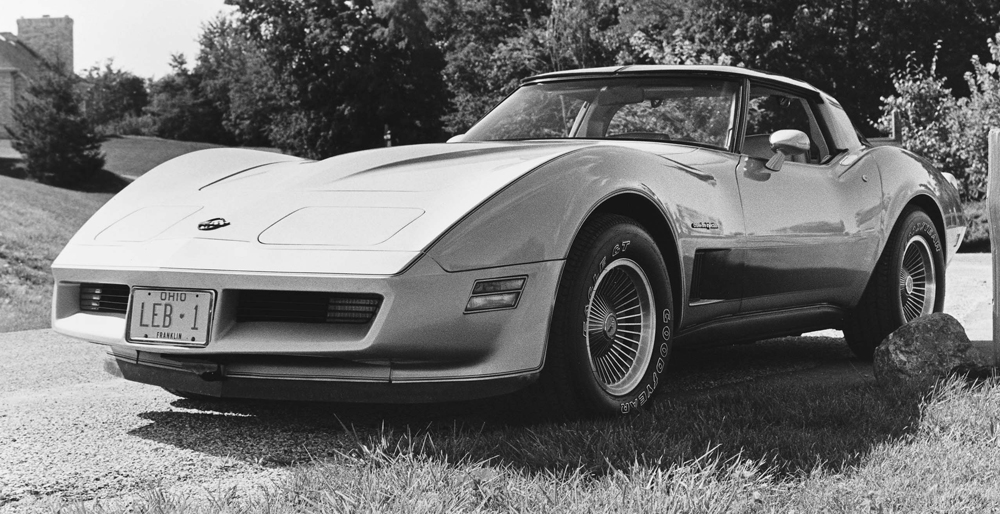|
|
|
|
1968 through 1982 Third generation Corvette - The third generation of Corvettes ran from 1968 through 1982 model years.
1968 The Corvette '68 restyle, with its more pronounced front and rear fender curves and flowing lines, earned more than 38,700 sales - a record that would hold until 1976. The Sting Ray name left the lineup in 1968, but returned the following year as one word (Stingray). The all-new 1968 Corvette was dramatically different in appearance from any other Corvette. Bearing a striking resemblance to Chevrolet's "Mako Shark II" concept vehicle, it literally changed the way people looked at cars. Along with its bold new look, the A radical interior and exterior redesign, the headlamps have a new "pop-up" design. The coupe features a removable rear window, and "T-top" removable roof panels an industry first for a production car. The battery is moved from the engine compartment to a separate compartment behind the seats. 1968 Corvettes introduced hidden windshield wipers. This is the last Corvette to have a dash-mounted ignition switch until it reappeared on the fifth generation 1997 Corvette. Also in 1968, Car and Driver announces that Corvette won two of thirteen awards in its reader's choice poll: Best GT/Sports Car over 3000cc, and Best All-Around Car. In 1968, Corvette production hit a new record of 28,566. Corvette received its most radical styling change in 1968, and this basic body design would continue to evolve for 15 years.
1969 "Stingray" script is added above the fender louvers, and engine displacements range from 350 to 427 cubic inches. Wider eight-inch wheel rims are offered, as is a headlamp washer. The 250,000th Corvette a gold 1969 convertible comes off the St. Louis production line on Nov. 19, 1969. Corvette boasts the highest sales of any two-seat sports car nameplate in world automotive history to date.
1970 The 1970s were a time of great change for Corvette. While a late production start for the 1970 model year prevented the first cars from rolling off
the assembly line until January, sales rebounded in 1971 and continued to climb. But at the same time, outside forces, such as the oil embargo and increasing government regulations, were having an impact on Corvette performance.
Side louvers replace the slotted fender vents. Other changes include new fender flares, an optional high-performance 350 cubic-inch V8 (RPO LT1) and the 454 cubic-inch engine replaces the 427. The ZR-1 optional factory-installed racing package is offered for the first time. It includes the LT1 engine; a heavy-duty four-speed transmission; heavy-duty power brakes; an aluminum radiator; special springs and shocks; front anti-roll bar; and rear spindle-strut shafts.
1971 In 1971, a special-purpose "Big Block" V8 was available that produced 425 horsepower. But 1971 was the last year for "gross" horsepower ratings. The industry changed to a "net" rating system that accounted for the exhaust system, vehicle accessories and other components. All Corvette engines are designed to run on unleaded fuel. A new 454 cubic-inch V8 (RPO LS6), rated at 425 hp, is one of the highest-performance regular production V8s ever offered in a Corvette.
1972 This is the last year of the removable rear window, egg-crate-style grille, front and rear chrome bumpers and the LT1 engine. A factory-installed theft-deterrent system is standard.
1972 Chevrolet Corvette Stingray The Convertible model was dropped at the end of the 1975 model year. The next Corvette Convertible would not be available until 1986.
1973 Highlights include a body-color front bumper, steel side-beam passenger protection and a new coolant recovery system. Softer chassis mounts help isolate the body from road bumps and vibration.
1974 The Corvette sports body-color front and rear bumpers. The radiator is redesigned for improved low-speed cooling, and the safety belts are a one-piece, lap-and-shoulder design. This is the last year of the 454 cubic-inch engine.
1975 Although the styling appears the same as 1974, a new integral-honeycombed energy-absorption bumper system is used both front and rear. It is the first year for a catalytic converter, a headlamp warning buzzer, a kilometer-per-hour speedometer subface, a point-free distributor, and a high-energy ignition system. This is the last year a Corvette convertible is offered until its return in 1986.
1976 The Freedom battery is standard equipment. Kelsey-Hayes aluminum wheels are offered for the first time. New standard features include a partial-steel underbelly and over-the-radiator, carburetor air induction system.
1977 In 1977, Corvette hit the 1/2-million milestone as the 500,000th car rolled off the assembly line. Leather seats were standard for the first time, although buyers could choose cloth as a no-cost option. Production reached 49,213 units. An interior restyling includes a new console (for temperature controls), relocation of the steering wheel (for easier entry and exit), standard leather seats and Delco radios. Cruise control is available for the first time. The 500,000th Corvette a white coupe with red interior is produced in St. Louis on March 15, 1977. Corvette celebrated its 25th anniversary in 1978 and, in recognition of this event, was selected to be the Official Pace Car of the Indianapolis 500. Two special models were produced for public sale -- a Pace Car appearance edition and a special Silver Anniversary paint package.
1978 The 1978 model year marked Corvette's 25th birthday, and Chevrolet celebrated the milestone with the 25th Anniversary Edition Corvette. Every 1978 Corvette featured the 25th Anniversary emblem. This model also marked the return of the fastback roof line, which was billed as having 3-1/2 times more glass area than the previous model. The 25th Anniversary 'Vette also featured a restyled interior with a larger, more accessible rear storage area and a security cover. A special 25th Anniversary two-tone paint scheme was available in silver and gray. 1978 Indy Pace Car was the first Corvette Indy Pace Car. Chevrolet produced 6,502 Limited Edition Indy Pace Car replicas, which quickly became collector's items. 1978 was the Corvette's silver anniversary; thus, the '78 Indy car sported two-tone paint, with black on the top (above the beltline) and 25th Anniversary silver paint on the bottom. The fastback body is introduced. This is the Corvette's 25th year of production and a special silver anniversary badge replaces the traditional crossed-flags emblem. A special Indianapolis 500 pace car replica is offered. Wide, low-profile 60-series tires are offered for the first time.
1979 In 1979, Corvette production hit 53,807 units -- a record that still stands today. Changes to the Corvette's engine include a dual-snorkel air-cleaner intake, larger exhaust pipe diameters and open-flow mufflers. An AM/FM radio is standard. New Sport leather-seating and halogen headlamps are optional.
1980 Styling news includes a new low-profile hood, a rear-bumper cover with integral spoiler and black louvers over the fender vents. Cornering lights are standard, and a weight-saving rear axle is introduced.
1981 A fiberglass-reinforced, monoleaf rear spring is made standard on all powertrains, as is a Computer Command Control emissions system, a Delco Freedom II battery, black-and-bright magnesium-valve rocker covers and a stainless-steel, free-flow exhaust manifold. Corvette finally gets its own assembly plant as production moves to Bowling Green, Ky., on June 1.
1982 Standard equipment includes a Crossfire Injection System with twin-electronic fuel injectors located above the throttle body and a specially designed manifold. A four-speed automatic transmission with overdrive is standard no manual transmission is offered. The Collector Edition commemorating the final year of Corvette's third generation features a unique exterior paint scheme; specific wheels and hubs; white-letter tires; a rear defogger and power antenna; special emblems; and the first Corvette hatchback. The 1982 Collector Edition Corvette was produced to commemorate the first year of production at the new Bowling Green Assembly Plant, and the final year of the "Mako Shark" style Corvette of the late '60s and 70s. The Collector Edition featured a special silver/beige metallic color with cloisonn้ emblems, front, side and rear. Also included were a silver/beige metallic interior with multi-tone leather seats and door trim, specific aluminum wheels with center hubs similar to 1967 Corvette alloy wheels and a lift-up hatchback instead of a fixed fastback. All 1982s, including the '82 Collector Edition, featured a "preview" of fourth generation Corvette technology the 5.7-liter V8 engine with computer-controlled Cross-Fire Fuel Injection. A total of 6,759 Collector Editions were produced.
Sales of Corvette remained strong in the early '80s. It was clearly now a part of the American fabric, attracting buyers with its rich heritage and dramatic styling. There were no 1983 Corvettes produced for public sale, but 43 pilot models of the new-generation Corvette were built in 1983 for testing purposes. Today, one of those 1983 pilots is on display at the Corvette Assembly Plant in Bowling Green, Kentucky. The rest were scrapped.
|
|
|
